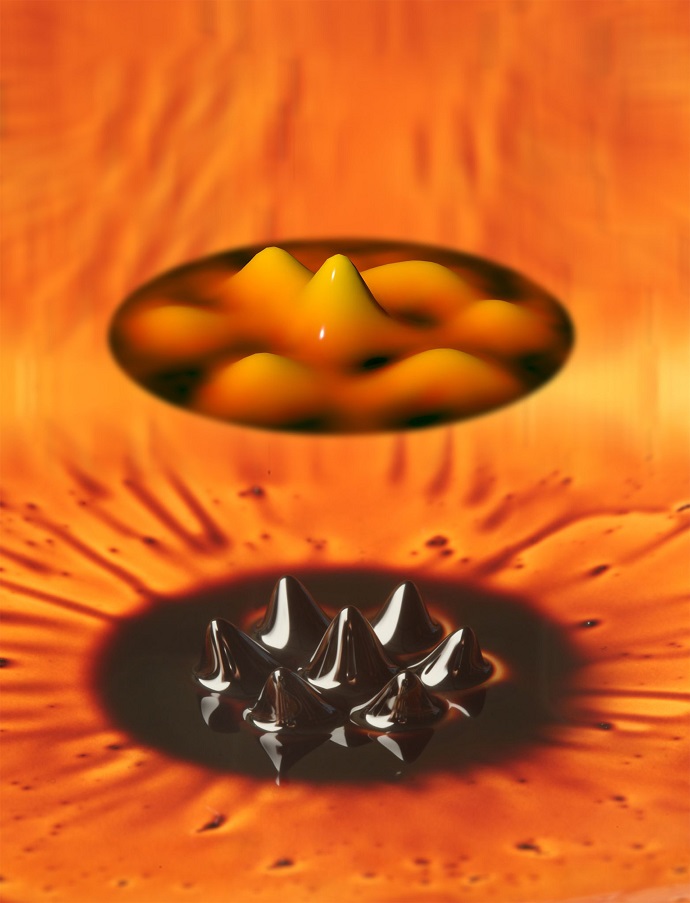February 2, 2016
The world of quantum mechanics happens only in small scales around a few nanometres. In this nano world, particles can behave like waves, and vice versa and have only some probability to be in a particular region. These effects can be directly observed in ultra cold dilute gases. For this purpose thousands or a million atoms are cooled down to a few billionth of a degree above absolute zero. At such low temperatures particles become indistinguishable und unite collectively to a single giant matter wave called Bose-Einstein condensate which has astonishing properties. The matter wave flows as quantum fluid practically without inner friction, thus it is named superfluid.
Researchers around Tilman Pfau at the Center for Integrated Quantum Science and Technology IQST in Stuttgart (Germany) created such a quantum fluid made of tiny magnets – that are atoms of the most magnetic element dysprosium. They call it “quantum ferrofluid” since it is superfluid and has magnetic properties similar to classical ferrofluids. Ferrofluids consist of ferromagnetic nanoparticles dissolved in oil or water. When a strong magnetic field is applied perpendicular to the surface of the ferrofluid it undergoes a so-called Rosensweig instability. The surface is no longer smooth like normal fluids, but it generates a regular thorny surface resembling a hedgehog. From the point view of the tiny magnets in a ferrofluid, every south- and northpole attract each other. Therefore, it is energetically favourable to be on top of each other along the field direction, so the fluid grows peaks out of the smooth surface.
For their investigations, described in the science journal “Nature”, the researchers from Stuttgart created a quantum ferrofluid with 15,000 atoms and induced a magnetic instability. They observed then the emergence of regular patterns consisting of microscopic droplets, similar to the Rosensweig instability of ferrofluids. Each droplet has a radius smaller than 1 µm and their existence was not expected with the current state of research on these systems. Their observation could thus lead to a new field of research, as the researchers expect quantum fluctuations, related to Heisenberg’s uncertainty principle, to play an important role in the droplet existence. These quantum fluctuations allow a unique state of matter that connects opposite properties of gases, crystals and superfluids. This connection could be the path to a so-called supersolid, a spatially ordered material with superfluid properties.
*Original publication: Observing the Rosensweig instability of a quantum ferrofluid, Holger Kadau,
Matthias Schmitt, Matthias Wenzel, Clarissa Wink, Thomas Maier, Igor Ferrier-Barbut, Tilman Pfau,
Nature vom 1. Februar 2016
http://www.nature.com/nature/journal/vaop/ncurrent/full/nature16485.html













